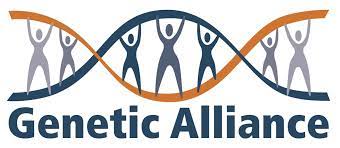The first symptoms of Alström Syndrome which are usually noticed in babies are extreme sensitivity to light and rapid movement of the eyes, called “photophobia” and “nystagmus.” These symptoms are caused by the slow degeneration of the retina. The retina is composed of layers of film in the back of the eye that hold the photoreceptors. The photoreceptors capture light and send visual information to the brain via the optic nerve. The photoreceptors that are used for color vision and seeing in well-lit situations are called “cones.” Typically the cones deteriorate first in the eyes of children who have Alström Syndrome. The photoreceptors that remain are called “rods.” They work best in dimly lit situations. The rods may also stop working as the person who has Alström Syndrome gets older.
This eye condition is called cone-rod dystrophy. Sometimes it is diagnosed as retinitis pigmentosa. Vision gradually decreases during childhood, and by late teen years people who have Alström Syndrome are left with very little or no vision. If your child has Alström Syndrome or a suspected diagnosis, it is important to anticipate vision loss and begin Braille skills and mobility training early.
People who have Alström Syndrome can begin to lose hearing in childhood or in adulthood. The hearing loss is called “sensorineural,” which means there is a loss of nerve function and auditory information is not getting to the brain for processing. People who have Alström Syndrome usually benefit from using hearing aids. Cochlear implants have also been beneficial in some individuals. If your child has Alström Syndrome or a suspected diagnosis, it is important to have regular hearing tests so that any hearing loss can be identified and dealt with.
In some cases, the heart muscle of people who have Alström Syndrome can be enlarged, a condition called “dilated cardiomyopathy.” This condition shows up sometimes in infancy and sometimes in adolescence or adulthood. It leads to the heart having difficulty pumping blood efficiently to all parts of the body. Fluid and blood may build up in the lungs, causing shortness of breath. The feet, ankles and legs may swell with fluid. This is called “congestive heart failure.” This condition can often be helped by medications that remove extra fluid from the tissues and others that help the heart to function better. If your child has Alström Syndrome or a suspected diagnosis, it is important to frequently monitor heart function, even if no symptoms are present.
Type 2 diabetes mellitus may develop in childhood or teenage years because the body does not process insulin and glucose the way it should. Children who have Alström Syndrome are “insulin resistant.” People with Alström Syndrome who have type 2 diabetes do not always need to take insulin, but need to take medications to control blood sugar and to follow a careful diet which is low in calories and refined carbohydrates. It is important to try to increase the amount of exercise for all people with Alström Syndrome, even though vision loss can make this difficult.
The liver and the kidneys of people who have Alström Syndrome are usually affected. Problems in the functions of these organs typically show up when the children are in their late teens, but your physician should monitor this with at least yearly blood tests. Kidney or liver failure in adulthood is often the cause of severe problems for people who have Alström Syndrome.
There are several other conditions which may result from Alström Syndrome, including curvature of the spine (scoliosis), digestive disturbances, respiratory problems, high blood pressure and thyroid problems. It is important to get regular medical care to make sure all of the symptoms of Alström Syndrome are managed as well as possible. Guidelines for Monitoring Alstrom Syndrome, suggested by the Alström Syndrome International Scientific Advisory Board, are available on this website.
REFERENCES:
Marshall JD, Maffei P, Collin GB, Naggert JK. (2011): Alström syndrome: genetics and clinical overview. Curr Genomics. 2011 May;12(3):225-35. doi: 10.2174/138920211795677912.
Marshall JD, Maffei P, Beck S, Barrett TG, Paisey RB.(2011): Clinical utility gene card for: Alström syndrome. Eur J Hum Genet. 2011 Oct;19(10). doi: 10.1038/ejhg.2011.72. Epub 2011 Apr 27. No abstract available.
Girard D, Petrovsky N.(2011): Alström syndrome: insights into the pathogenesis of metabolic disorders. Nat Rev Endocrinol. 2011 Feb;7(2):77-88. doi: 10.1038/nrendo.2010.210. Epub 2010 Dec 7. Review.




